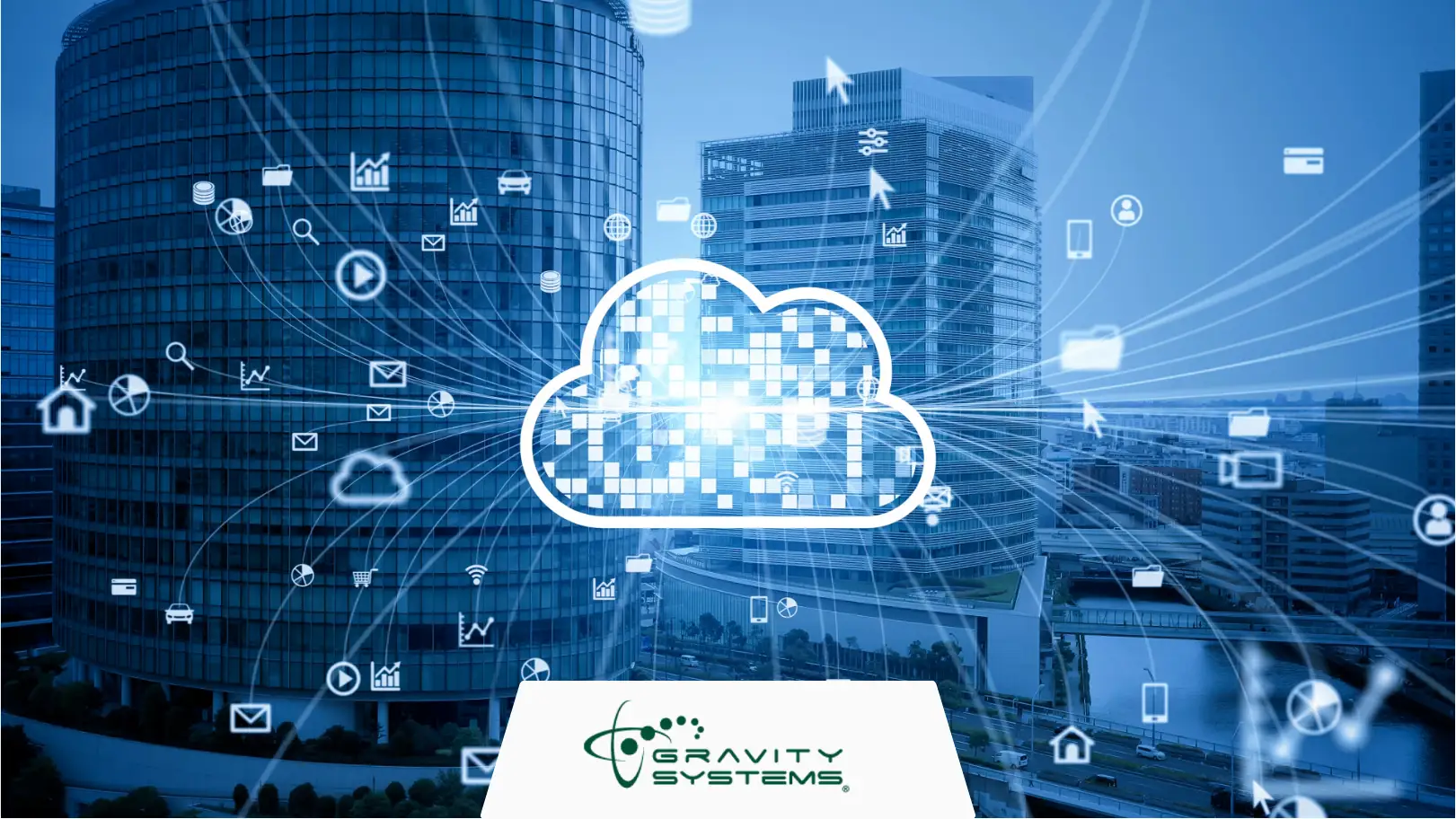The Complete Cloud Migration Process: What You Need to Know
Navigating the cloud migration process can be a daunting endeavour for businesses aiming to harness the benefits of cloud computing.
The complexity of transitioning from an on-premises data center to a cloud environment involves more than just a technical shift; it encapsulates a strategic transformation of how data and applications are managed, accessed, and secured.
As Kent Morris, President of Gravity Systems says, “Without a strategic approach, businesses risk encountering operational disruptions, data loss, and security breaches, which can undermine the advantages of cloud migration and affect business continuity.”
In this blog, we will dive into the essential steps and considerations necessary to ensure a successful cloud migration, guiding you through a strategic pathway to transform your IT landscape efficiently and securely.
Stop Worrying About Prolonged Downtime During Your Cloud Transition
Gravity Systems Delivers Smooth, Uninterrupted Migrations.
Learn More
Understanding Cloud Migration Steps
1. Establish Clear Objectives and Scope
Before embarking on the migration journey, it's crucial to define clear business objectives and determine the scope of migration. This involves identifying which applications and data are to be moved, the order of migration, and the expected outcomes.
This step is foundational because it aligns the migration effort with business goals, ensuring that resources are allocated effectively and that the migration supports overall business strategy.
2. Choose the Right Cloud Environment
Selecting the appropriate public, private, or hybrid cloud environment is pivotal.
This decision should be guided by factors such as data sensitivity, regulatory compliance, and business needs. A public cloud offers scalability and flexibility, while a private cloud provides more control and security. A hybrid cloud combines both, offering flexibility and tailored security. Flexera’s 2023 State of the Cloud Report, 71% of companies opt for a hybrid cloud.
|
Feature |
Public Cloud |
Private Cloud |
Hybrid Cloud |
|
Accessibility |
Globally via internet |
Restricted, within the organization |
Mix of global and restricted access |
|
Cost Efficiency |
More cost-effective due to shared resources |
Higher due to dedicated resources |
Balances cost, leveraging both models |
|
Control |
Limited |
High, customizable |
Variable, based on deployment |
|
Security |
Standard measures, shared environment |
Enhanced, isolated environment |
Tailored, combines both levels |
|
Scalability |
High, on-demand resources |
Limited by in-house capacity |
Flexible, based on resource allocation |
|
Suitability |
General, less sensitive applications |
Sensitive data, specific needs |
Combination, ideal for mixed requirements |
3. Conduct a Thorough Assessment
A comprehensive assessment of the existing infrastructure and applications is vital.
This evaluation identifies compatibility with cloud environments, potential challenges, and necessary modifications for successful migration. It ensures the applications and data are cloud-ready, minimizing surprises during the transition.
4. Plan Your Cloud Migration
Developing a detailed cloud migration plan is essential.
This plan should outline the migration phases, timelines, and responsibilities. It serves as a roadmap, guiding the migration process and ensuring all stakeholders are aligned. Effective planning mitigates risks and is a reference point throughout the migration journey.
5. Ensure Security and Compliance
Security and compliance are paramount in cloud migration.
This step involves implementing robust security measures, ensuring data protection, and adhering to regulatory requirements. It's essential to understand the security features of the cloud service provider and how they integrate with the organization's existing security protocols.
6. Execute the Migration
The execution phase is where the planned migration becomes a reality.
This approach should be phased, starting with less critical applications and data to mitigate risk. Communication and coordination are crucial throughout this phase to address any issues promptly and keep the migration on track.
7. Testing and Validation
Post-migration, rigorous testing is essential to ensure that applications and data function correctly in the new cloud environment. This includes performance testing, security validation, and user acceptance testing. It's critical to ensure that the migration meets the set objectives and that the systems are ready for operational use.
8. Optimize for the Cloud
After migration, it's important to optimize the resources to leverage the cloud's full potential.
This includes scaling resources based on demand, optimizing costs, and implementing best practices for cloud management. Optimization ensures the cloud environment is efficient, cost-effective, and aligned with business needs.
9. Continuous Monitoring and Management
Continuous monitoring is essential to maintain the health and performance of the cloud environment. This includes monitoring application performance, resource utilization, and security. Ongoing management ensures that the cloud environment evolves with the business, adapting to changes and new requirements.
10. Educate and Train Your Team
Ensuring that your team is proficient in navigating the new cloud environment is crucial.
Training and education should cover the technical aspects of the cloud platform, best practices for security and management, and any changes to operational procedures. A well-informed team is essential for maximizing the benefits of cloud migration.

Additional Steps in Cloud Migration to Consider
11. Data Migration Strategy
A data migration strategy ensures that data is transferred securely and without loss. This includes planning the data transfer, ensuring data integrity, and validating the successful migration of data.
12. Risk Management and Contingency Planning
Identifying potential risks and having contingency plans in place is vital to address any unforeseen challenges during the migration process.
|
More resources you might like: |
Ensure a Smooth Cloud Transition with Gravity Systems
Cloud migration is a significant step towards digital transformation, offering enhanced flexibility, scalability, and efficiency. However, the complexity of the process necessitates a well-structured approach, detailed planning, and adherence to best practices.
By following the outlined steps and focusing on a strategic approach, businesses can mitigate risks, ensure a smooth transition, and maximize the benefits of moving to the cloud.
If the path to cloud migration seems daunting or if your organization seeks expert guidance to navigate this transformative journey, Gravity Systems is here to assist.
|
Discover Trusted Cloud Services in Austin, Texas |
As a leading managed IT services provider, we specialize in offering end-to-end cloud services, ensuring your migration is not just successful but also optimized to align with your business objectives.
Leverage our expertise to demystify the cloud migration process and transition with confidence. Contact us today to schedule a free consultation and take the first step towards a smooth and effective cloud migration.

_NO_BCS_bigger_weird_green_clear.png?width=100&name=for-website_large(save-at-500-tall)_NO_BCS_bigger_weird_green_clear.png)





